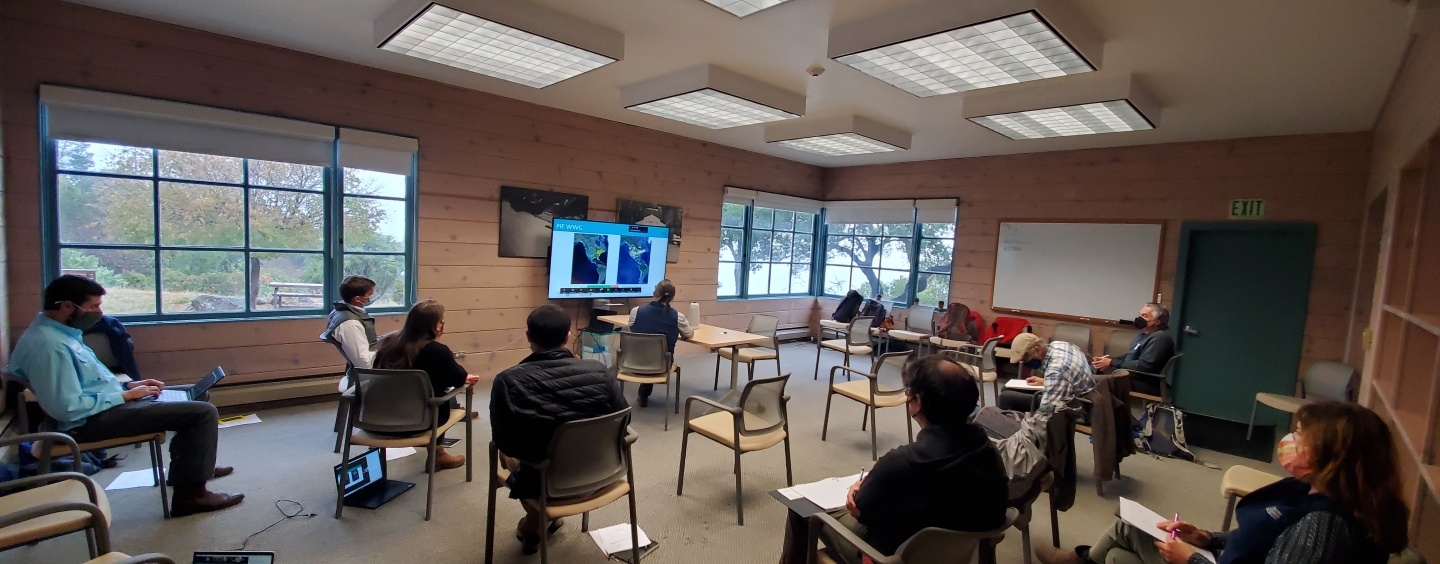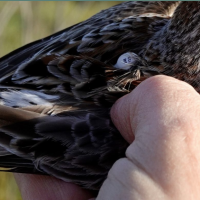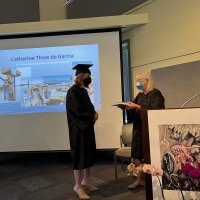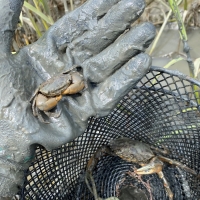Forming a Bay Area Motus Network

Last week, staff from ACE Basin NERR in South Carolina and partners from Mississippi State University came to the SF Bay NERR to help get one of the first Bay Area Motus towers installed and to help lead a Motus implementation workshop. We started off the week by utilizing the teams’ Motus knowledge by installing a Motus tower focused on capturing tagged migratory shorebirds at Rush Ranch Open Space Preserve with the help of Jasmine Westbrook, stewardship project manager, Solano Land Trust.
Later in the week, we held a public Motus workshop at the Estuary and Ocean Science Center. In this hybrid workshop, we covered everything from getting a Motus station installed on a property, educational and engagement opportunities, to scientific research/partnership opportunities provided by Motus wildlife tracking. Participants were able to learn from those experienced at installing, running, and working with Motus data from partner organizations such as ACE Basin NERR, Mississippi State University, Point Blue Conservation Science, and the Nature Conservancy. A link to the workshop recording and presentation slides can be found in the 'Presentations' section in NERR Resource Library here.
What is Motus?
The Motus Wildlife Tracking System is an international collaborative network of researchers that use automated radio telemetry to simultaneously track hundreds of individuals of numerous species of birds, bats, and insects. The system enables a community of researchers, educators, organizations, and citizens to undertake impactful research and education on the ecology and conservation of migratory animals. When compared to other technologies, automated radio telemetry currently allows researchers to track the smallest animals possible, with high temporal and geographic precision, over great distances. A [Motus] station consists of several parts: a radio receiver (computer) and peripherals such as antennas, cables, a mounting structure, and a power supply. Installing and maintaining a Motus station is no small task, but the rewards are great.
What did we learn?
Well, a lot of things actually! First, not all stations are created equal. At ACE Basin NERR in South Carolina most shorebird research takes place using low frequency antennas, however, here in the San Francisco Bay, both high and low frequency tags are utilized.. This means that Motus stations in California need to use both low and high frequency antennas, to ensure capturing animals being tagged with both types of tags.. Second, before deploying any stations, you need to know what the primary purpose of the station is. What is your animal or insect of interest? Birds, bats, and butterflies oh my! Topography, local infrastructure, and migratory patterns are all important factors to think about when considering a station location. Last, and perhaps the most important, is to talk to others interested in similar research questions or locations. It benefits everyone involved to have multiple adjacent Motus stations to provide detections of tagged animals as they pass between the stations. Working with other interested organizations or individuals can mean cost-sharing and potentially great partnership opportunities.
Where are we going?
This workshop was just the start of building the San Francisco Bay Motus network, and a regional working group. Products of this workshop, such as a potential Bay Area Motus stations map and contact lists, will be shared within the working group to encourage the distribution of Motus knowledge. We are also working with partners at Point Blue Conservation Science and the Nature Conservancy to share Motus parts and purchasing information to ease the procurement process. If you or someone you know is interested in joining the California working group, please contact Mary Whitfield at mjwhitfield.ssrs@gmail.com. It is our hope that this workshop continues to provide a foundation of easily accessible knowledge on all things Motus in the Bay Area and beyond.
Sources:



